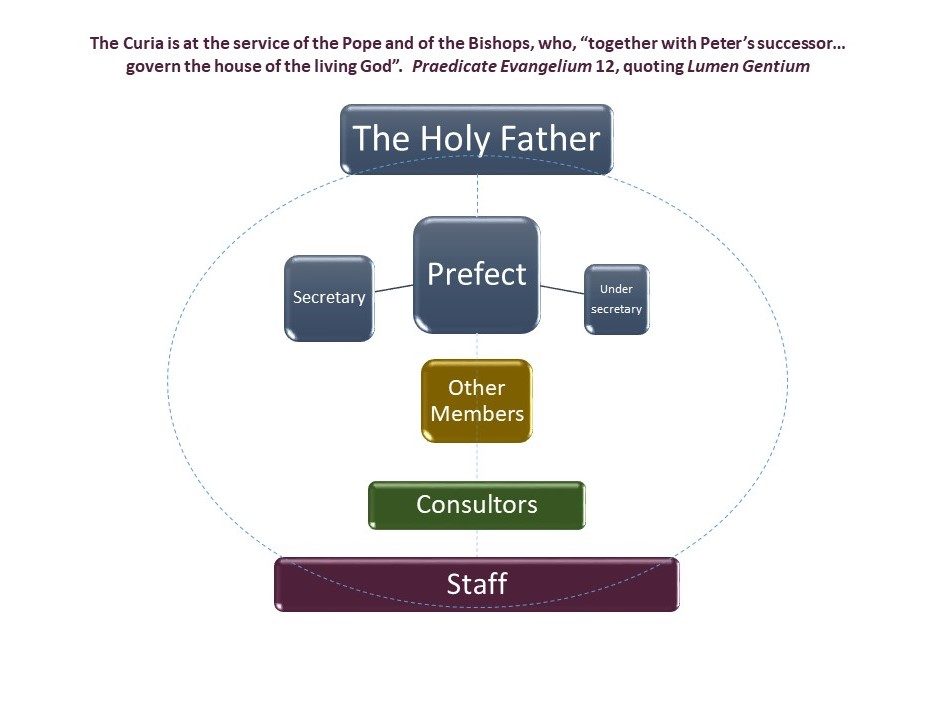Structure of the Dicastery for Interreligious Dialogue
Hover over the pulsing button to read about the role, and click the button to see more details.
“The Roman Curia is primarily an instrument at the service of the successor of Peter to assist him in his mission as “perpetual and visible source and foundation of the unity both of the Bishops and of the whole company of the faithful”, [Lumen Gentium] and to be of assistance to Bishops, particular Churches, Episcopal Conferences and their regional and continental groupings, the hierarchical structures of the Eastern Churches and other institutions and communities in the Church.” Praedicate Evangelium II.1
“The curial institution is governed by the Prefect, or equivalent, who heads it and acts in its name.” Praedicate Evangelium III.14.§1
“The Secretary, with the help of the Undersecretary or Undersecretaries, assists the Prefect in handling the work of the Dicastery as well as directing the personnel.” Praedicate Evangelium III.14 §2
“The Secretary, with the help of the Undersecretary or Undersecretaries, assists the Prefect in handling the work of the Dicastery as well as directing the personnel.” Praedicate Evangelium III.14 §2
“The members of curial institutions are appointed from among the Cardinals living in Rome or outside the city, to whom are added some Bishops, especially diocesan or eparchial ones, insofar as they have expertise in the particular matters involved. Depending on the nature of the Dicastery, priests, deacons, those in Institutes of Consecrated Life and Societies of Apostolic Life and lay faithful may also be appointed members.” Praedicate Evangelium III.15
“The consultors of curial institutions and offices are appointed from among the faithful who are distinguished by their expertise, proven ability and prudence. In identifying and choosing them, care must be taken to respect, as much as possible, the criterion of universality.” Praedicate Evangelium III.16
“The officials are selected, as far as possible, from various regions of the world, so that the Curia may reflect the universal character of the Church. They are taken from among clerics, members of Institutes of Consecrated Life and Societies of Apostolic Life and the laity, who are distinguished for their experience, proven expertise attested by appropriate academic degrees, virtue and prudence. They should be chosen by objective and transparent criteria, and should have a suitable number of years of pastoral experience.” Praedicate Evangelium III.14 §3

